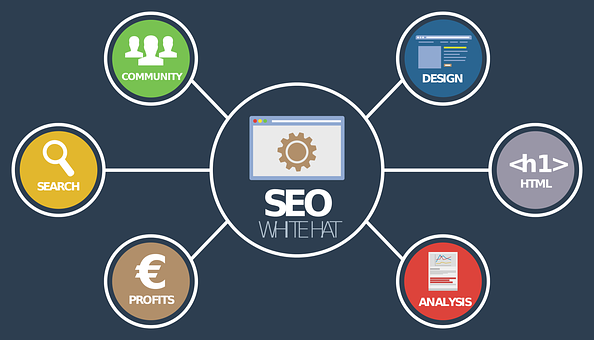Search engine optimization (“SEO” for short) is a complicated way to achieve a simple goal of helping you and your business move up the search engine results page for relevant queries. If you own an auto repair shop, you want local folks who search “auto repair” on their smartphones to see your business — simple as that! Like the Yellow Pages were back in the day, Google is where you need to be to find customers today.
All of this is a whole lot easier said than done, though. SEO is about making your web presence as appealing as possible to search engine “spiders” (programs that “crawl” the internet, reading and indexing each website’s location and content) and search engine algorithms (which decide how the indexed sites are ordered for each search). The problem is, we don’t know exactly what’s in Google’s algorithm (or Bing’s, for that matter), because this stuff is top secret.
Here’s the good news, though: While we’re not exactly sure of every detail, we do have an idea of what the broad strokes of Google’s algorithm look like.

Links: The heart of the search engine method
If SEO is about catering to search engines, then we need to know what search engines want. We have only some idea. We know that Google, Bing, and the rest of the gang weigh certain factors in precise but unknown ways. Those factors include the use of keywords and how often they pop up (“keyword density”). They include HTML tags and metadata. And, most important of all, they include links.
Links are central to how search engines work. Those programs called spiders that search engines use to find and index websites are using links to get from place to place. Google and the rest of the search engines know which links are going where, and they can use that to learn a lot about a website.
What matters in a link?
Generally, Google knows that a site that is frequently linked to elsewhere must be pretty popular and (hopefully) pretty reputable and trustworthy. Google can also figure out what the website is about — to return to the example we used in the introduction, your auto repair website would be identified as such not only through its text (which should mention auto repair) but through links that go do it. If links headed your way use “auto repair” in the linked text, then Google can figure out that’s what your site is all about.
But not all links are the same. The linked text and the destination are not all that matters: Google also cares about the site that the link is coming from and how reputable that site is.

Links are not all that matter to a site’s reputation. The more reliable the site’s information, the more well-known and trusted the authors who write on it, and many other factors can make a site more or less of an authority on the subjects it covers.
Some of these factors are a bit subjective, of course, but we know that Google and the rest of the search engine gang must translate some measure of authority into a number for each domain name. So SEO companies do, too, and use their domain authority calculations to decide how valuable links going to and from certain sites are. If a site with a low “DA” score links to your auto repair shop, it won’t help you much. But if The New York Times links to you, that’s a huge deal. Good SEO companies use a da checker in their link building strategies to ensure that your site gets links from the very best.

SEO and your business’ future
Does this all sound a little complicated? Never fear: You don’t have to do this stuff yourself. You can and should outsource this work to the digital marketing experts who have been working in this field for years.
With the right SEO team in your corner, your business will start climbing the ranks of Google and earning authority of its own. SEO and links are your link to a better business.
